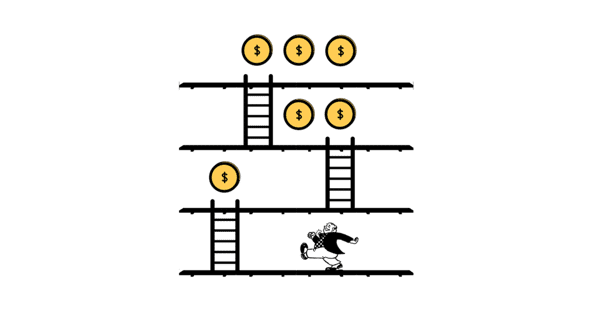How Gamified Hiring Creates a More Engaged and Productive Workplace (Guest post)
by Jawad Ahmed
What if hiring could do more than just fill open positions?
What if it could set the stage for long-term engagement, productivity, and success?
Workplace engagement isn’t just a feel-good concept—it has real business impact.
According to Gallup, only 23% of employees worldwide feel engaged at work, leaving most either disengaged or actively unhappy.
HR strategies that prioritize engagement from the very first interaction can help reverse this trend.
That’s where gamified hiring comes in.
By using situational judgment tests and interactive challenges, companies can identify top talent while creating an engaging candidate experience that translates into a more motivated workforce.
Gamified hiring is more than about just better recruitment. It also serves as a purpose of building a workplace where employees feel energized, invested, and ready to perform.
What is Gamified Hiring, and Why Does It Work?
Gamified hiring takes traditional recruitment methods and adds game-like elements to make the process more engaging and revealing.
It’s not about turning job applications into video games.
Instead, it uses real-world challenges, interactive simulations, and scenario-based assessments to see how candidates actually think, problem-solve, and collaborate.
For example, instead of a standard interview question like, “Tell me about a time you handled a conflict at work,” a gamified hiring process might drop the candidate into a virtual workplace challenge where they have to resolve a team dispute in real time.
This kind of approach gives HR teams real insights into how people perform under pressure, rather than just relying on well-rehearsed answers.
The best part?
It makes the hiring process more fair, engaging, and accurate.
Candidates aren’t just judged on their resumes or how well they talk in interviews—they’re assessed on how they actually work.
Gamified Hiring and Workplace Engagement Go Hand in Hand
A workplace that thrives on engagement starts before the first day on the job.
If the hiring experience is engaging and interactive, employees are more likely to feel motivated and connected to their work from day one.
Here’s how gamified hiring helps create a more engaged and productive workplace:
1. Hiring the Right Fit From the Start
One of the biggest reasons employees disengage is because they’re in the wrong job.
Maybe they don’t actually have the skills they claimed to on their resume, or maybe the company culture isn’t what they expected.
Gamified assessments give candidates a real taste of what the job is like—and give employers a much clearer picture of how the candidate actually performs.
By using job simulations and problem-solving challenges, HR teams can make better hiring decisions and reduce the number of mismatches that lead to disengagement down the line.
2. Creating an Exciting Candidate Experience
Nobody enjoys a hiring process that feels like a chore.
Long, repetitive applications and outdated interview questions don’t exactly scream “We’re a great place to work!”
But when companies use gamification, candidates walk away feeling challenged, engaged, and even excited about the opportunity.
When people have a positive experience with a company—even before they’re hired—they’re more likely to start their new role with a sense of energy and enthusiasm.
3. Building a Culture of Problem-Solving and Innovation
A workplace that values creativity and innovation needs employees who can think on their feet.
Gamified hiring naturally attracts and identifies problem-solvers, strategic thinkers, and adaptable employees—all qualities that drive long-term engagement.
If you hire people who thrive in dynamic, interactive environments, you’re already setting the stage for a workplace culture that encourages collaboration and continuous learning.
4. Boosting Employee Retention
It’s no secret that disengaged employees are more likely to leave.
When hiring is done through gamification, new employees often feel a stronger connection to their work and the company from the get-go.
They’ve already been through an engaging, immersive process that helped them see their own potential within the company.
The result?
They’re more likely to stick around, contribute, and grow with the company—rather than feeling disconnected and heading for the exit after a few months.
Making Gamified Hiring Work for Your Organization
So, how do HR leaders bring gamification into their hiring process?
Here are some practical ways to start integrating it:
- Scenario-Based Challenges:
Instead of asking about past experiences, create interactive workplace scenarios where candidates need to respond to challenges in real-time.
- Skill-Based Simulations:
For roles that require technical or strategic skills, use assessments that replicate real job tasks rather than generic multiple-choice tests.
- Hackathons or Team Challenges:
For companies hiring in tech or creative fields, collaborative challenges can reveal who works well under pressure and who thrives in a team environment.
- Points and Progression Systems:
Giving candidates real-time feedback or a sense of achievement through progression levels makes the process more engaging and motivating.
Final Thoughts
At the end of the day, a great workplace isn’t built overnight.
It starts with hiring the right people, the right way.
Gamifying assessments for hiring is more than just a modern recruitment trend; it’s a proven strategy for improving workplace engagement, productivity, and retention.
By making hiring more interactive, fair, and aligned with real job challenges, companies create a culture where employees feel valued, motivated, and ready to contribute.
And when employees start off engaged, they’re far more likely to stay that way.
Author Bio: Jawad Ahmed
I’m a content creator with 3 years of experience specializing in recruitment content at The Talent Games. I craft impactful lead magnets like case studies and whitepapers to drive engagement and generate leads. When I’m not writing, you'll find me indulging in my passion for football.



